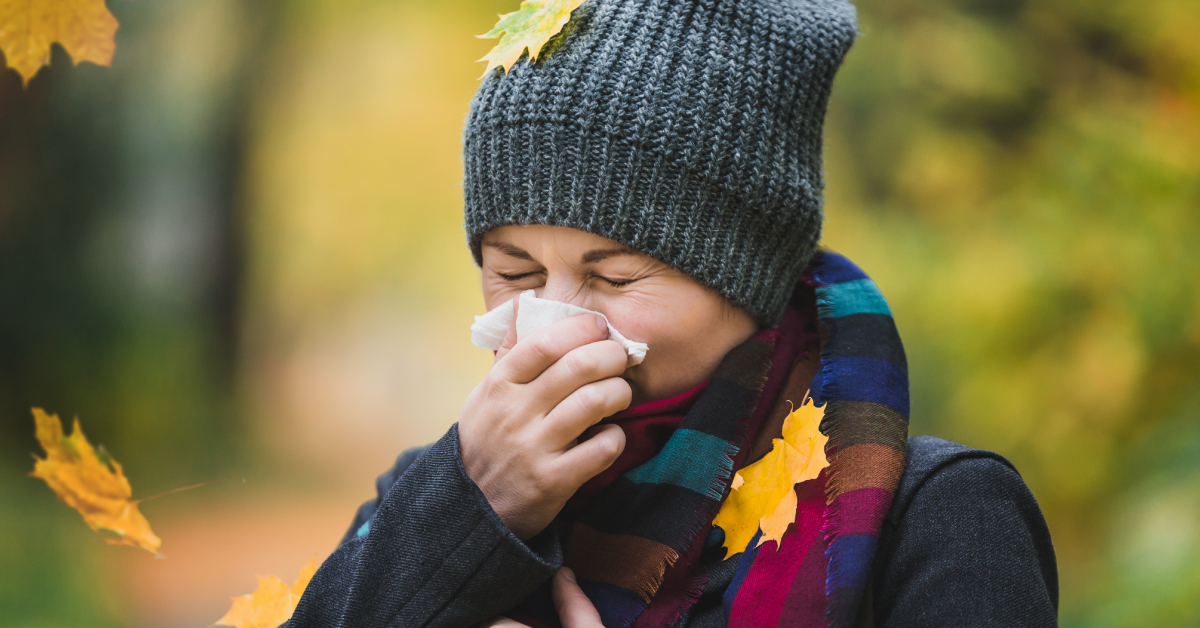Could it be Fall Allergies?

The spring and summer blooms have faded to make way for fall. So how come you are still sneezing?
When it comes to seasonal allergies, a lot of people think about pollen during spring. However, red and teary eyes, an itchy throat, and sneezing aren’t exclusive to April and May. When the air cools and leaves begin to fall, a host of allergens can also trigger the same set of symptoms.
When you have an allergy, your immune system is trying to fight off a substance you are sensitive to. Your body releases histamine – and this leads to unpleasant fall allergy symptoms. Irritants may include pollen, mold, as well as weeds.
Once you identify your triggers and symptoms, you should be able to manage your allergies well. Your Corpus Christi ER would like to share some information to help you get through the season.
Fall allergy symptoms include:
- Sneezing
- Itchy, watery, or irritated eyes
- Headaches
- Itchy throat
- Hives or rashes on skin
- Wheezing and coughing
- Anaphylaxis (occurs in severe cases and is characterized by trouble breathing)
Note that some symptoms of fall allergy overlap with flu, the common cold, or COVID-19. One big difference about allergies is they do NOT cause a fever.
What allergens should you watch out for?
During long summer months, pollen and weeds become rampant.
Balmy weather gives a lot of opportunities for people across the country to hit the beach. However, as our spirits soar, so do pollen and ragweed counts.
Pollen and ragweed counts drop significantly in early September. But as soon as the weather starts to get rainy, weeds and grasses grow out of control. These include:
- Goldenrod
- Ragweed
- Mugwort
- Sagebrush
- Pigweed
- Cocklebur
- Burning brush
- Tumbleweed
- Lamb’s quarters
More weeds equate to more pollen, and this causes hay fever cases to rise. In particular, ragweed seems to weak havoc in the last quarter of the year.
Beware of mold
Nothing looks more autumn than leaves falling into huge piles. However, it becomes a breeding ground for mold once it starts to decay. This can cause heavy wheezing, breathing, can aggravate asthma, and cause other respiratory symptoms to individuals with mold allergies.
Humidifiers and damp basements are other causes of mold.
Do not make your symptoms worse
- If you are a seasonal allergy sufferer, you don’t have to avoid the outdoors altogether, but do consider your timing. It’s best to postpone your activities later in the day, since pollen counts are higher early in the day until 10 AM.
- Remember that pollen and mold spores can stick to practically anything, and this includes your skin, hair, and clothing. Like it or not, there’s a good chance you’re brining in irritants into your home. You can minimize your risk by leaving your shoes outside, wearing a face mask, throwing your clothes immediately in the washer, and wiping down or brushing your pets after walks.
- Close the windows during high pollen count or windy days.
Despite having allergies, it is possible to live a normal life. For treatment and guidance, be sure to see your allergist and take steps to avoid your allergy triggers. Keep your medicine close to you at all times.
If you experience the following serious allergic reactions, call 911 or go to your Corpus Christi ER immediately. You might be experiencing anaphylaxis, which is a life-threatening condition.
- Loss of consciousness
- Difficulty in breathing


